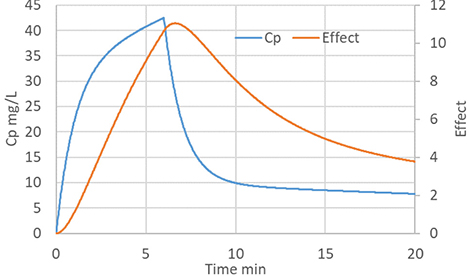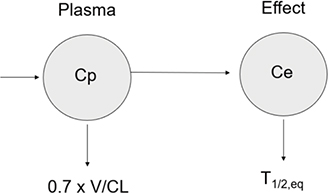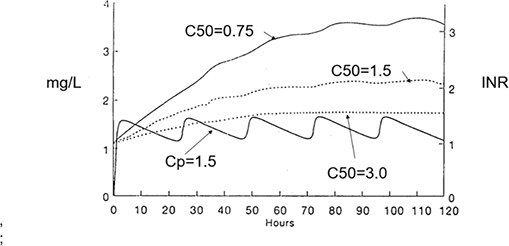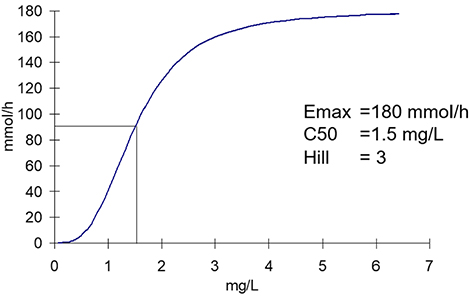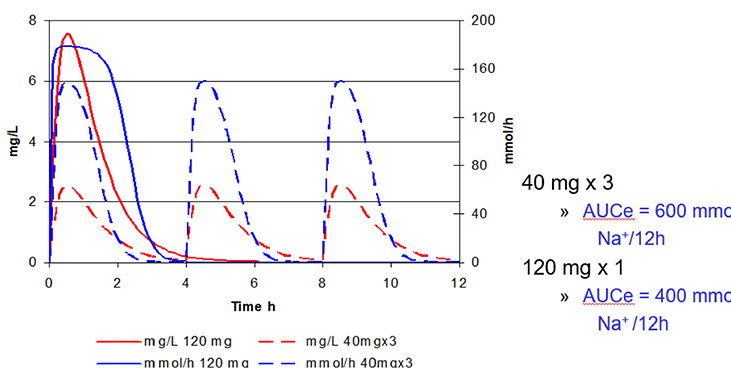Transl Clin Pharmacol.
2018 Jun;26(2):56-59. 10.12793/tcp.2018.26.2.56.
Pharmacodynamic principles and the time course of delayed and cumulative drug effects
- Affiliations
-
- 1Department of Pharmacology & Clinical Pharmacology, University of Auckland, Auckland, New Zealand. n.holford@auckland.ac.nz
- KMID: 2413827
- DOI: http://doi.org/10.12793/tcp.2018.26.2.56
Abstract
- This tutorial reviews the principles of the concentration "” effect relationship for the usual case when drug effects are delayed relative to changes in circulating concentrations. The key processes determining delay are distribution from the circulation to the receptor, binding to the receptor to produce a stimulus and translation of the receptor stimulus into an effect through turnover of physiological mediators. Some clinical outcomes are dependent on the accumulation of drug action which is predictable in terms of basic pharmacokinetic and pharmacodynamic concepts.
Figure
Reference
-
1. Stanski DR, Maitre PO. Population pharmacokinetics and pharmacodynamics of thiopental: the effect of age revisited. Anesthesiology. 1990; 72:412–422.2. Weiss M, Kang W. Inotropic effect of digoxin in humans: mechanistic pharmacokinetic/pharmacodynamic model based on slow receptor binding. Pharm Res. 2004; 21:231–236.
Article
- Full Text Links
- Actions
-
Cited
- CITED
-
- Close
- Share
- Similar articles
-
- Basic Principles of Drug Interaction
- Pharmacodynamic principles and the time course of immediate drug effects
- An overview of pharmacodynamic drug interaction with isobole and response surface model in anesthesia
- Antidepressants and Related Drug Interactions
- Pharmacodynamic principles and target concentration intervention

